So Your Company Sponsored Your First Conference Presentation
You're a great SE at your company. Marketing tells you that you've been picked to speak at a vendor conference and represent the company. They hand you the slide deck. My advice: build a different story.

Let me begin by saying, congratulations! The experience will be a good one for you. You'll learn a lot, hone your presentation skills, and improve your personal brand recognition. Getting to present - even if your company "bought" the time at a pay-to-play conference - is a wonderful opportunity.
I've had this opportunity more times than I recall. I've also had the opportunity to speak on my own merits several times at conferences. I've even had the honor of delivering a keynote at one event, and I loved the opportunity. But not all of them have gone great. Not all of them have landed. I've attempted to learn from my mistakes, and here's hoping I can share some wisdom with you to make your first presentations everything they can be.
Ditch the Sales Deck - Pick an Interesting Message

I know, you know it backward and forward. Your partner has probably heard you mumbling it in your sleep. Throw it out. Dump it. Don't use it.
Even at a paid-for presentation opportunity, nobody is looking for you to deliver the company sales presentation - except maybe your sales and marketing departments. (The good ones know better than this, but the bad ones sometimes don't)
Instead find a topic that you know is of interest. What problem have your customers been asking you to solve lately? What recent event have new prospects been asking your thoughts on? What revolutionary new way of dealing with an issue did your company just release? I'm not saying you can't talk about what your company does, but I'm saying you need a hook for your presentation. You need something that says "you want to work with us because we know what we're talking about and we are solving the problems you have." Use that to drive attendees to your booth after your talk. They're more likely to want to talk to you about how your company solves this issue with a good presentation leading them to your booth.
Use Your Company's Resources

Even if you aren't using the sales deck your company has plenty of resources to help you. Not good at creating slides? I'll bet you've got a graphics artist or two who would love to help you out. No, don't just dump your idea on them and expect them to build a deck, work with them. I've had some of my best decks come from a collaboration between my basic deck and my coworker's graphic story telling abilities. They helped me get just the right image on the screen, as well as de-cluttering my text-heavy slides - those aren't compelling in a presentation, as much as we might hope they would be. (Reading your own slides as a presentation isn't what you want to do, you want to speak to compelling imagery, honest!)
But as you're coming up with your topic and working on content, reach out to your resources inside the company. Talk to your presales peers for ideas. Talk to the production team for the latest ideas on how they're improving the solution. This presentation is yours to present, but not yours to develop in a vacuum.
If nothing else, ask a peer to review your presentation for the following common issues:
- "Eye-chart" images and blocks of text that nobody past the first row will be able to comprehend
- Jargon that makes perfect sense to you - the expert on the topic - that your audience might not know
- Content that just doesn't make sense or needs to be presented in a different way to come across well
Know It, Don't Memorize It

Presentations can go sideways. Easily and often. You get a question mid-presentation that throws you off. Your session start is delayed 10 minutes so you have to trim on the fly. Your "monologue" turns into a group discussion with the audience. A good presentation isn't a line-by-line script. Think of the funniest movies you've ever seen. Now pick one and do a search of that movie's name and the word "improvisation." I'm willing to bet your If you've memorized your presentation by rote you won't feel comfortable making changes to go with the flow of the room. I strongly recommend focusing on "knowing" your presentation, the cadences, the images, the concepts, the key language and phrases you want to use.
That doesn't mean you shouldn't practice. You need to practice. You need to know that without interruption your run-time is X (preferably about 5 minutes less than the time for up to a 45 minute presentation, about 10 minutes less for an hour or more) and you need to know what images go with what points. Know where you're inserting your jokes. Know where you're pausing or repeating yourself for impact. Know where that transition effect sets up a "punchline" or point of emphasis. Know where your key points are, and what content you can speed past when your timeline gets interrupted. Use the notes feature to help you with these things.
Practice with your remote. Practice in your presentation clothes. Practice standing up. Practice with your clock. Practice in front of a mirror (or a web-meeting set to record). Multiple times. Until you're mostly comfortable. I say mostly for a reason. "stage fright" is a good thing. It's an indication that you're invested in the presentation, that you're focused on getting it right, and that your content is interesting. A lack of stage fright can actually translate into a boring presentation.
When you can, visit the venue early. Find out about how you're being mic'd up. Where is the podium? How big is the stage? Can you practice once on the stage? Is there somewhere for you to put a water bottle (if you need one)? At least run through your slides to make sure they're legible from everywhere in the room?
Now Go Wow Them!

You've got this. You've put in the prep, you've developed a great message, you're ready to rock this. Everybody who has done this has done this for the first time once. Be confident in your message, be enthusiastic in your delivery, and know your audience is rooting for you to share great content with them as well.

